Read more related stories

Mano Gonzales, artist and stylist
Jan Pineda, film studio creative manager
Mano and Jan’s apartment was previously painted a drab brown. “We used to joke it looked like a mocha cake,” the artist says pointing to the apartment’s unique geometric crown molding. The pair has since painted it white, making vivid colors pop up against the parquet floors in one area and white marble in another: an Yves Klein blue couch in the living room and a cinema red carpet red rug in the bedroom.
The penthouse was a far cry from their previous tiny one-bedroom apartment in BGC, a rarity in the Metro Manila real estate market. So when the opportunity came, they jumped on it—despite having to hop and skip one more floor from the last elevator-serviced level. “We had to carry everything ourselves one extra floor,” Mano says. “Get movers, guys,” Jan adds.
READ: Home for the holidays and every moment in between

How important was it for you to have your own space in relation to your lifestyle and your work?
Jan: Well, I guess for me, we moved to work from home. So it’s important to have that space where I can do my work but also share it with friends.
Mano: Basically to also have a bigger space to do our work and to thrive personally so we can create a space that’s comfortable, that’s also inspiring, and have enough space to do personal projects in. And like Jan said, to have friends over. Because we have a lot of friends who live in the building, there’s a sense of community. We moved here during the lockdown, so that was a time when we can’t go out, can’t see people, because this is basically like a bubble for us. Para hindi namin masyado mafeel ‘yung lockdown vibes kasi we always hang out together.
What’s the best thing about living in Poblacion?
Jan: First, people didn’t really want to go to BGC to visit us. Here parang it’s mas central, it’s easier to go to.
Mano: Yeah, things are happening everywhere, it’s so easy to meet people and see our friends. During the lockdown, Poblacion was so quiet, walang ganap, because all the places were closed. But parang ‘di rin naman namin siya masyado na-feel because all of our friends are here (in the building) anyway.
Jan: In Poblacion, we hardly go out. All our friends are here na. But, of course, when our friends play, like si Judd [Figuerres] or si Butta B (Bea Te) plays around Poblacion, it’s easier to go.
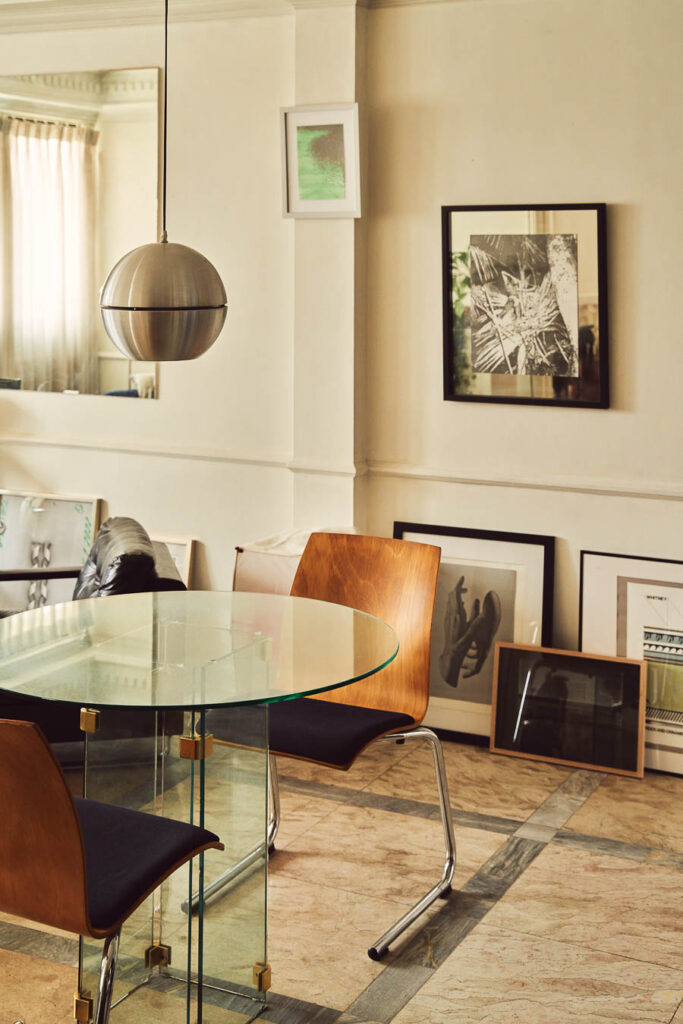
With dinner parties or having people over, you learn more about them, mas personal.
Jan Pineda
What was the vibe you were going for when putting together this space?
Jan: We built around the space lang.
Mano: We’re both very visual people, so we get inspired by the things we surround ourselves with. So I think that’s number one. Number two… is there a number two? [laughs]
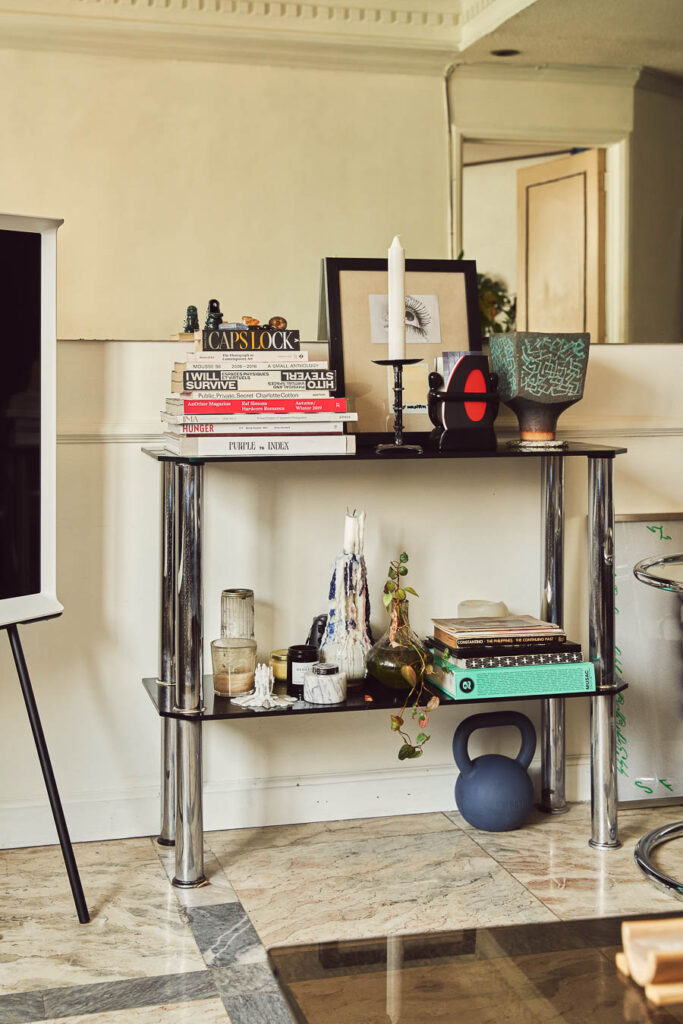
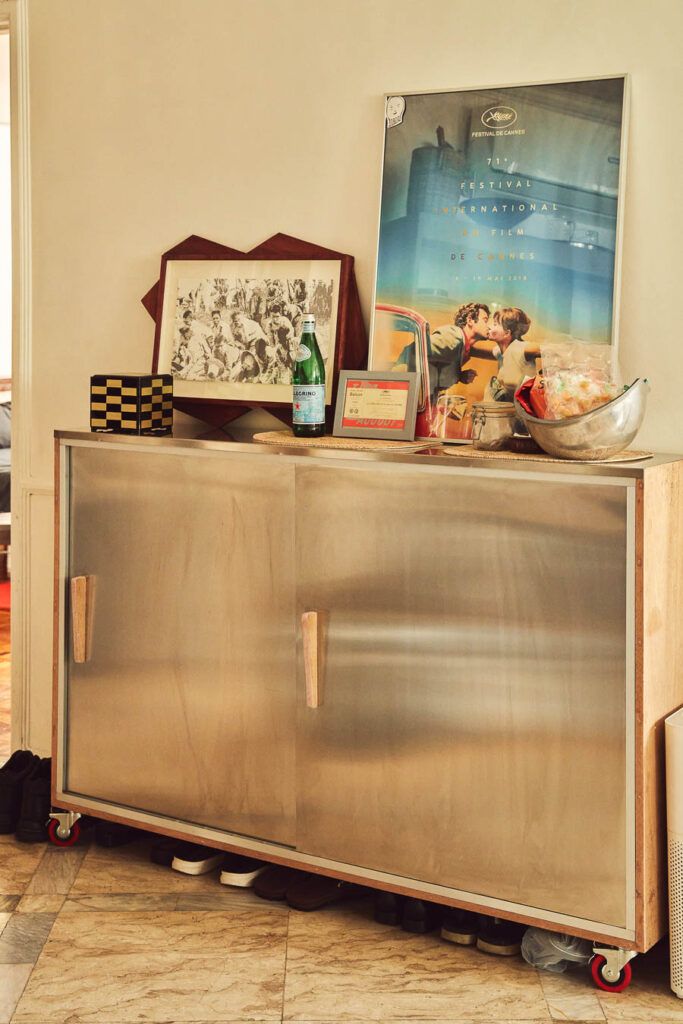
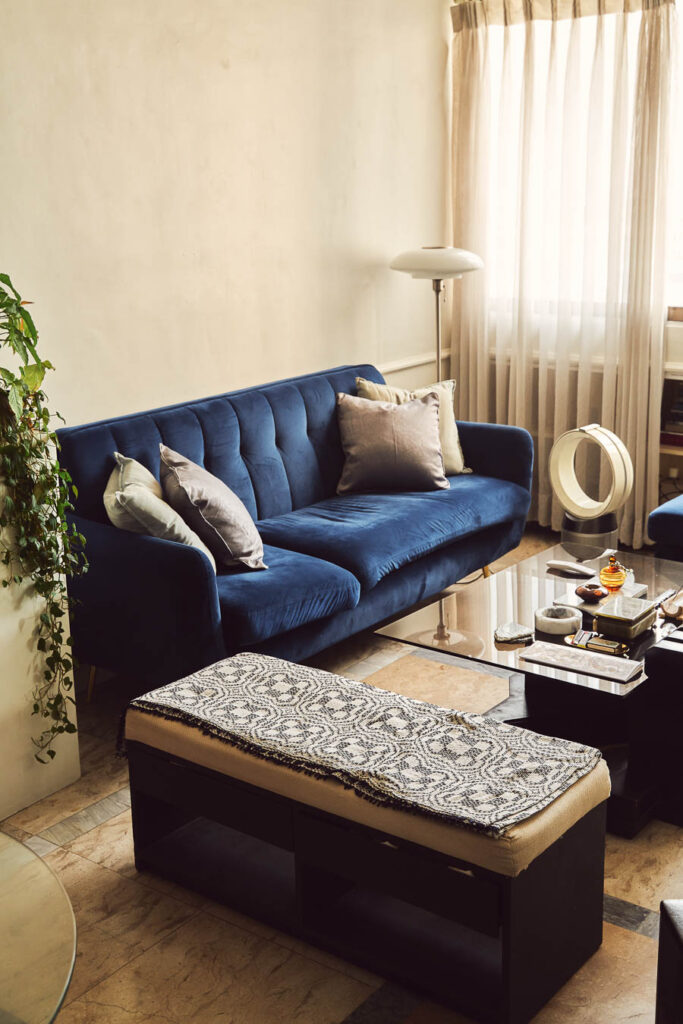
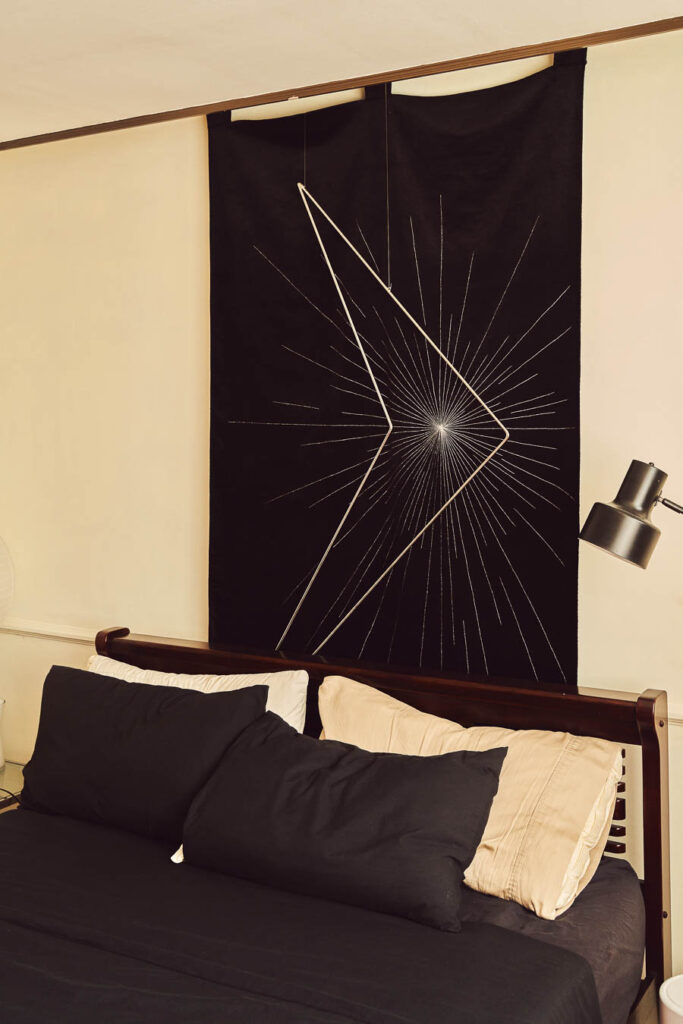
I guess things that make things comfortable and homey. Right now malakas ‘yung araw but at night it gets really cozy here, and I think ‘yun ‘yung pinaka-[non-negotiable] namin ni Jan, that it’s cozy. There’s no design brief. Though we like collecting a lot of like, most of our stuff here are old stuff from our own houses, second-hand pieces we find online–
Jan: –or stuff from travels
Mano: So mga ganun. Basically, just things that inspire us.
What are your favorite parts of your home?

Jan: This studio work area that we also turn into a dining space when we have people over. And my favorite activity here now is hosting, having dinner parties with friends. Nung pandemic, other establishments are closed so we had to make do with the space. I think I discovered I liked that better—hosting—kasi mas intimate. Before, parang I’d hang out with friends sa bars or clubs, pero alam mo ‘yon, ang daming nangyayari. With dinner parties or having people over, you learn more about them, mas personal. Also, we work here din.
Mano: It’s the most active place. It changes a lot.
Jan: Yeah. Working on different projects, I also bring my team here sometimes. So ‘yun, here ‘yung pinakamaraming interactions.
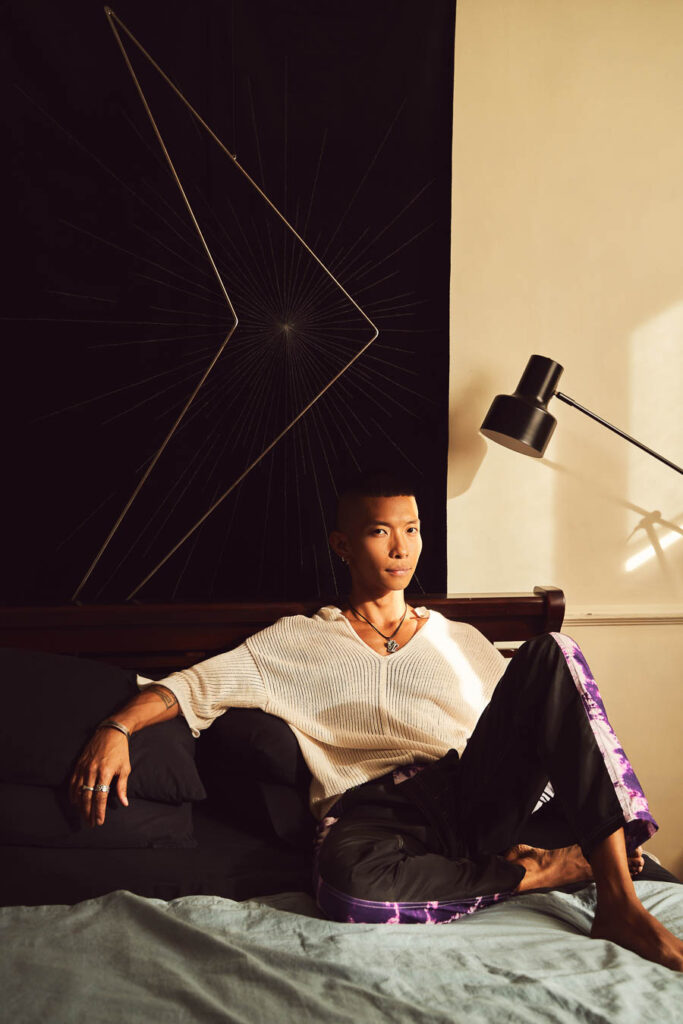
Mano: Ako naman, before we even moved here we would visit the building because we had friends who lived in this building na before. ‘Yung pinaka-crush ko talaga ‘yung view nung mga units here. Basically, you have an unobstructed view of—What is this district? CBD. This view also kind of informs how we design the space, or how we set up things.
A lot of the pieces we get here are kind of like inspired by what you see outside. ‘Yun talaga yung favorite ko about here. The view. It’s so hard to look for a view like this in Makati. And because our surroundings—Poblacion—are so active, parang naging project namin ni Jan ‘yung to make a cozy space for us. I think that’s why we never really go out anymore, we just hang out here.
The world may have reopened, but that doesn’t mean intimate dinner parties at home have gone out of style. Dinner parties are part of a long standing tradition of entertaining people you value. It’s a marked sign of trust to invite individuals into your private space, which makes it an important event—no matter how casual it can be.
I grew up learning how to host grand celebrations and more intimate gatherings from the best of the best—my mom. She is the grande dame of events planning. In her partying prime, she could host a party of over 300 at the drop of a hat, and it would be perfect. But where my mother really shined was when she’d invite a few people to our home for a small get-together.
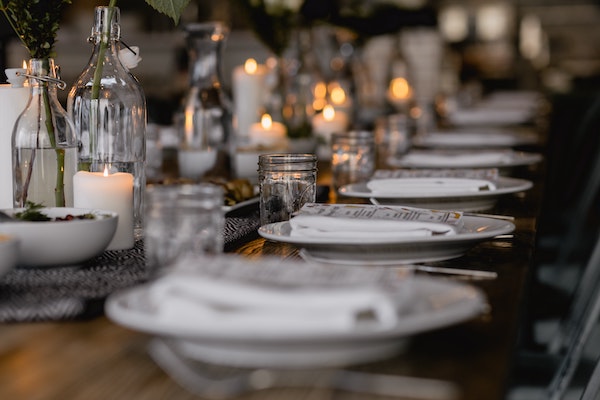
Over the years, she’s taught me some of her secrets to making these small gatherings as special and memorable as possible. Some of her rules don’t really apply anymore (like food tasting with caterers and picking out a theme for the evening), but the spirit of the party principles she espouses still remains the same.
For beginner hosts—or those of you who want to step up your hosting game—here are a few basic principles you should stick to when it comes to throwing your own dinner party.
Choose your guests wisely
Before planning out anything else, the party should start with the people you’re inviting. Your home is a sacred space because it’s where you spend most of your time (hopefully) and feel most comfortable. When choosing dinner guests, it’s important to trust them enough to let them into your home.

You also have to keep in mind that there should be a balance between personalities. If all the people you’re inviting are already friends, then there’s no need to worry. But if you’re inviting different friend groups, you need to think about whether they would mesh or not. It would be best to invite people with common interests, but again, these are just friendly pieces of advice.
You can invite whoever you want, but you should always prioritize the comfort of your guests as well as your own.
Send timely invites
As we all know, most adult friendships are stuck in scheduling hell. It can be extremely difficult to see your friends because of time-bound priorities and other boring, adult things. When you plan a dinner party, it’s good to check everyone’s availability before setting the date.

Ideally speaking, you should pick a date where everyone can make it. Realistically, though, you’ll probably have a few friends who might need to either catch up or can’t make it at all. Don’t let this throw you off. You can still have a great time.
Once you’ve set your date, make sure to ask for confirmation from guests. This is extremely important to determine how much food you’ll serve (if you’re doing a full hosting gig) or to assign dishes for people to bring (if it’s more pot-luck style). Having confirmation also helps you avoid food waste.
Make sure your invite includes the date, time, location, and a map or a pin if people are unfamiliar. Including a landmark and other instructions (like ringing the doorbell or waiting for you at the lobby) can also be helpful. You can also send a reminder a day or two before the party so people won’t forget.
Menu variety is key
Food and company are the two things people remember the most when they attend events. Aside from the taste and quality of the food, offering variety is also important. It doesn’t have to be a lot of food, it just has to cater to the guests you’ve invited.
Dietary restrictions, allergies, and food preferences are very common, so make sure to ask your guests about any food-related issues they might have.
If you’re doing a pot-luck-style meal, ask your guests to bring something easy to make or easy to buy. Ingredients are expensive these days, so asking a guest to bring a fancy dish to make isn’t the best idea. Time is also a valuable resource most people are lacking, so it would be better to ask them to bring something easy instead.
Set the vibe
Bringing out the fine china and fancy decor isn’t as important as it once was, but setting the vibe still is. Picking out the right playlist and making sure your dining area is comfortable for your guests is the right way to go.
If you’re dining indoors, just make sure that there’s enough ventilation and space for people to comfortably eat and lounge around. When dining outdoors, there’s a little bit more work to be done. You can set a few candles on the table to make sure bugs don’t get to your food and maybe a fly catcher near the dining table to keep mosquitoes from dining on your guests.
Also, having an awning or a covering ready is a good idea in case it rains. Having fans set up near the table is a must because you don’t know how hot it might get as the evening progresses.
If you’re extra (like my mom is), you can also do fun things like picking a theme and decorating. These things aren’t necessary, but they can be lots of fun.
Try to start on time, but…
Account for lateness. Filipino time is real, and your guests most likely adhere to it. As a host, though, you should try to be as punctual as possible. Last-minute preparations like setting the table and tidying up is fine, but the food should be ready by the time your guests are expected to arrive.

You should also account for any latecomers by preparing a plate for them in advance when they arrive. We’re still very much in a pandemic, so it’s safer to separate some food before everyone has dug in for the latecomers to enjoy later.
Welcome any help
Hosting is hard. It’s a lot of planning in advance and same-day preparation, so don’t be shy to accept any help or ask for it when you need some. Again, your guests are (ideally) people you trust, so it shouldn’t be a problem.
You can ask a close friend to help you co-host so you’re not single-handedly trying to wrangle the entire thing into existence and back again. Being a host is a big responsibility, so asking for help is okay.
Don’t overthink and have a good time
Overthinking kills the enjoyment in everything, especially when you’re hosting. Instead of worrying about all the small details and whether or not everything is perfect, you should let it all go and have fun.
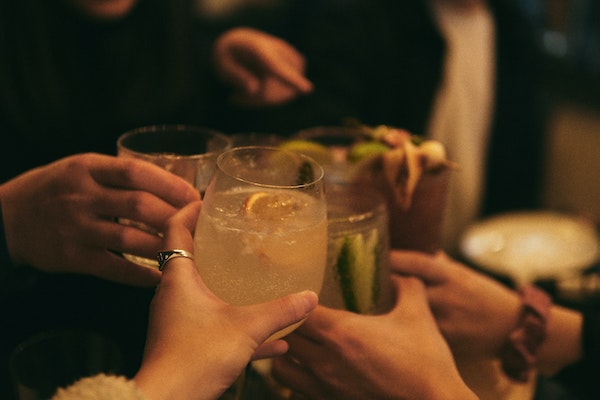
Being a good host also teaches you a lot about being a good guest. You get to understand how everything works and do better the next time you plan a gathering or be a guest at a gathering. If something goes wrong, that’s okay. That’s all part of the experience. You don’t have to freak out because it’s all fixable. If not, you can laugh about it in the future (as long as everyone is safe).









